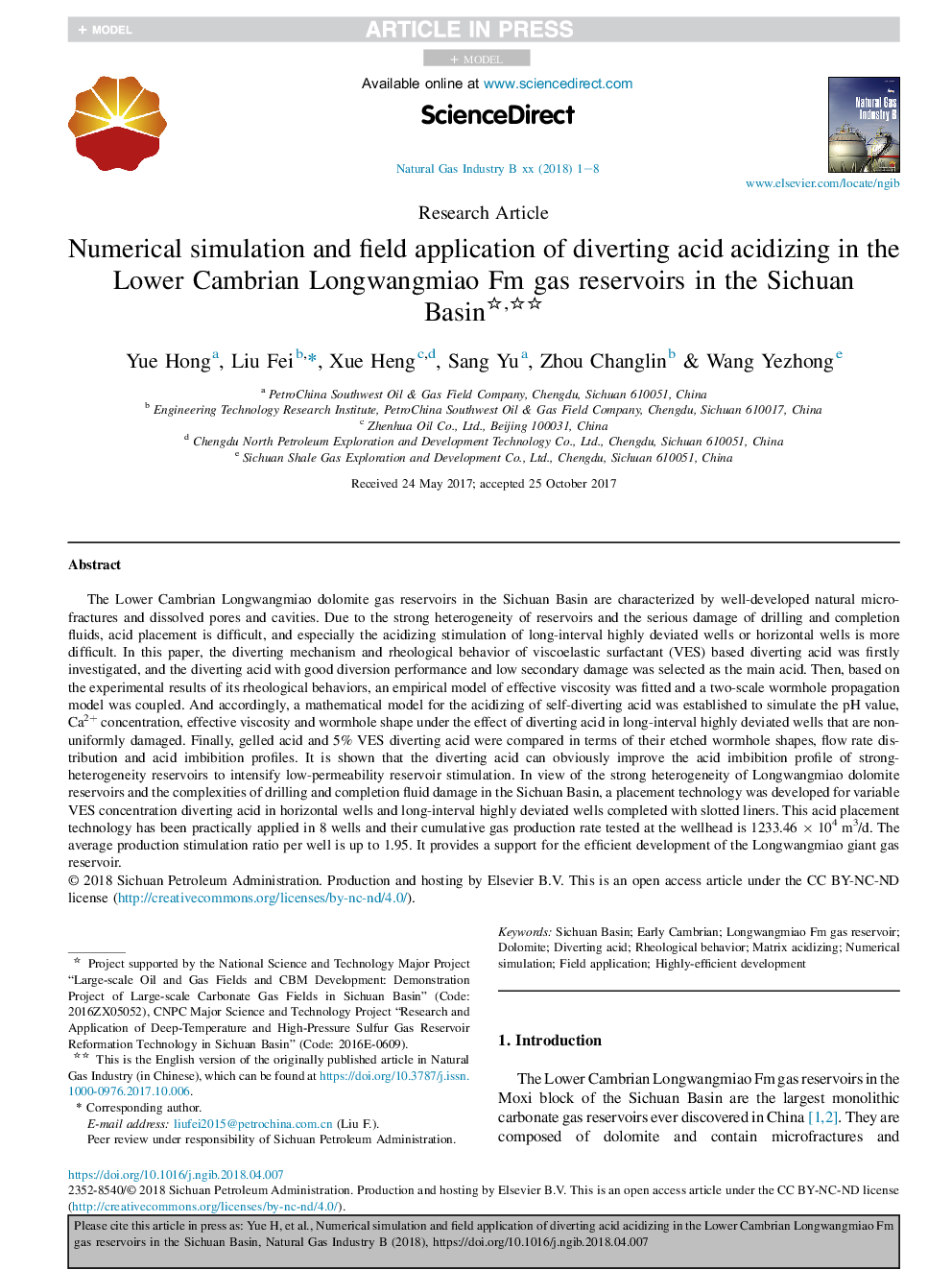| Article ID | Journal | Published Year | Pages | File Type |
|---|---|---|---|---|
| 8109467 | Natural Gas Industry B | 2018 | 8 Pages |
Abstract
The Lower Cambrian Longwangmiao dolomite gas reservoirs in the Sichuan Basin are characterized by well-developed natural micro-fractures and dissolved pores and cavities. Due to the strong heterogeneity of reservoirs and the serious damage of drilling and completion fluids, acid placement is difficult, and especially the acidizing stimulation of long-interval highly deviated wells or horizontal wells is more difficult. In this paper, the diverting mechanism and rheological behavior of viscoelastic surfactant (VES) based diverting acid was firstly investigated, and the diverting acid with good diversion performance and low secondary damage was selected as the main acid. Then, based on the experimental results of its rheological behaviors, an empirical model of effective viscosity was fitted and a two-scale wormhole propagation model was coupled. And accordingly, a mathematical model for the acidizing of self-diverting acid was established to simulate the pH value, Ca2+ concentration, effective viscosity and wormhole shape under the effect of diverting acid in long-interval highly deviated wells that are non-uniformly damaged. Finally, gelled acid and 5% VES diverting acid were compared in terms of their etched wormhole shapes, flow rate distribution and acid imbibition profiles. It is shown that the diverting acid can obviously improve the acid imbibition profile of strong-heterogeneity reservoirs to intensify low-permeability reservoir stimulation. In view of the strong heterogeneity of Longwangmiao dolomite reservoirs and the complexities of drilling and completion fluid damage in the Sichuan Basin, a placement technology was developed for variable VES concentration diverting acid in horizontal wells and long-interval highly deviated wells completed with slotted liners. This acid placement technology has been practically applied in 8 wells and their cumulative gas production rate tested at the wellhead is 1233.46Â ÃÂ 104Â m3/d. The average production stimulation ratio per well is up to 1.95. It provides a support for the efficient development of the Longwangmiao giant gas reservoir.
Keywords
Related Topics
Physical Sciences and Engineering
Energy
Energy Engineering and Power Technology
Authors
Hong Yue, Fei Liu, Heng Xue, Yu Sang, Changlin Zhou, Yezhong Wang,
